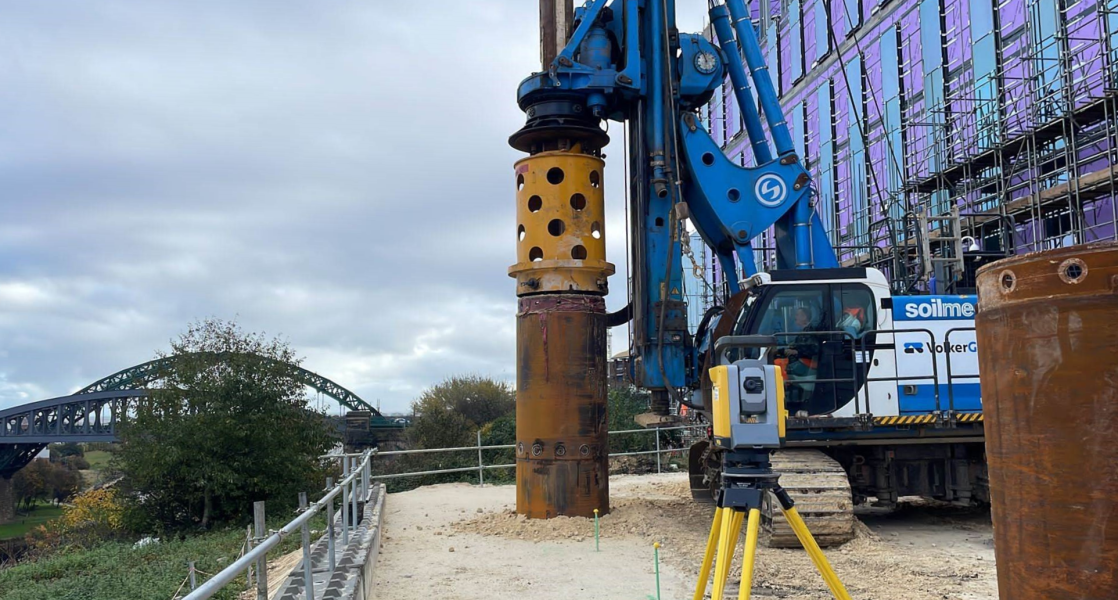
New Wear high-level Footbridge
In May 2023, VolkerGround Engineering was awarded a contract by VolkerStevin, supporting them on a project to construct a new pedestrian footbridge. The New Wear high-level Footbridge will provide connectivity between Sheepfolds and Sunderland city centre, it is a part of the Riverside Sunderland Masterplan.
During VolkerGround Engineering’s first visit in July 2023, the team constructed a single 880/750mm diameter rotary bored preliminary test pile, on each side of the river (North Pier and South Pier). The piles were subjected to a 14MN test load, the equivalent of 238 African Elephants!
Each preliminary test pile was instrumented with strain gauges, to provide information on the load carrying capacity of the ground between gauge position. The outcome of the testing determined the design details of the main piles, which was undertaken by ARUP. VolkerGround Engineering’s in-house technical team designed the anchor piles that allowed the test frame to generate the 14MN downward force. Each anchor pile was reinforced with four large diameter high grade bars, to transmit the load into the pile.
After successful construction and testing of the test piles, VolkerGround Engineering returned to site and installed the 1300mm/1180mm diameter rotary bored piles. These piles were to form the foundations for the South Pier and Abutment.
Given the sloping terrain and access challenges of positioning a suitable rig at the pile locations for the South Pier, the team constructed a series of 880/750mm diameter rotary bored piles, to support a temporary steel platform. The purpose was to divert any surcharge loading imposed by our 100tonne SR95 and to preserve the historic quay wall, which runs parallel to the river wall, during construction of the pier piles approximately 10m above the foundation level.
Throughout October and November 2023, VolkerGround Engineering moved on to the North Pier. The team installed GU21N steel sheet piles using our Volvo EC380 EL excavator, equipped with an SG75 Movax. This enabled VolkerStevin to construct a temporary tower to support the bridge deck steel and a further temporary steel platform, allowing our rotary bored piling rig to access and construct 12, 1300/1180mm diameter rotary bored piles.
Demonstrating our commitment to sustainability, the steel used to construct the Northern Temporary Jetty was repurposed from the South Pier, which had itself been reused from a previous HS2 project, significantly reducing the carbon footprint.
The jetty extended approximately 20 metres out toward the River Wear and was positioned 10 metres above the pile cut-off level. Upon completing the first six piles, the jetty was relocated to facilitate the construction of the remaining six piles.
Given the close proximity to the River Wear, VolkerGround Engineering took additional environmental precautions, including using bio-oil in our equipment and constructing a temporary bund to prevent surface water runoff or concrete from entering the river.
VolkerGround Engineering are very proud to have played such a pivotal role in the construction of this key piece of infrastructure, which will carry foot traffic for years to come.







